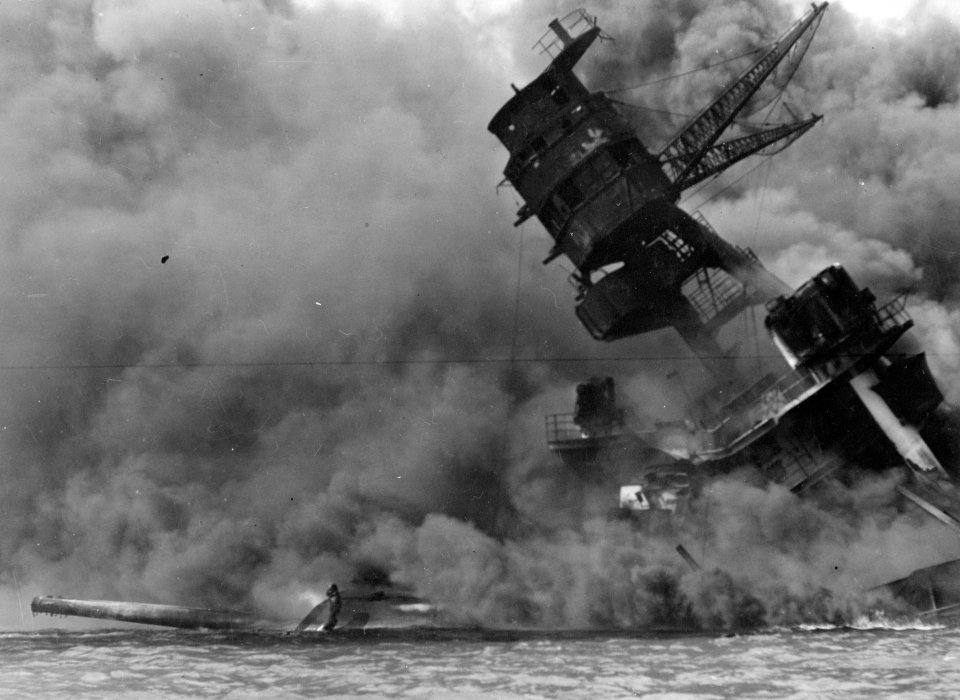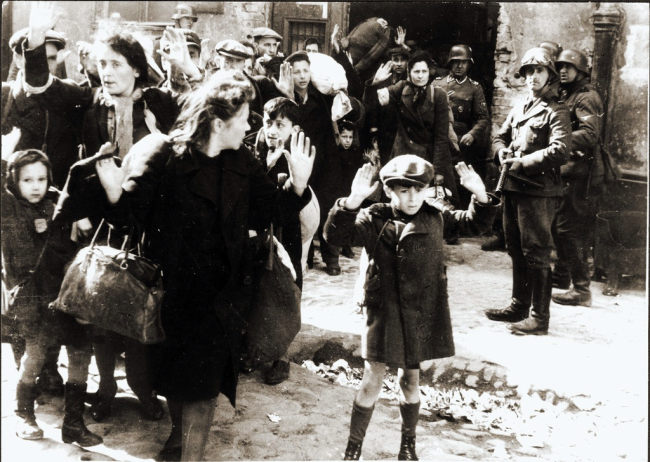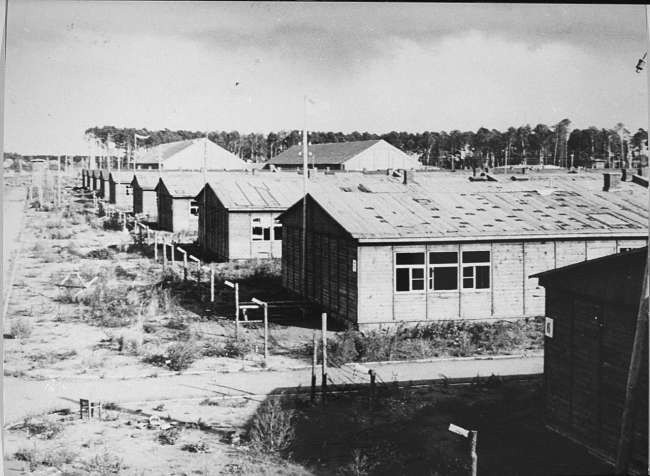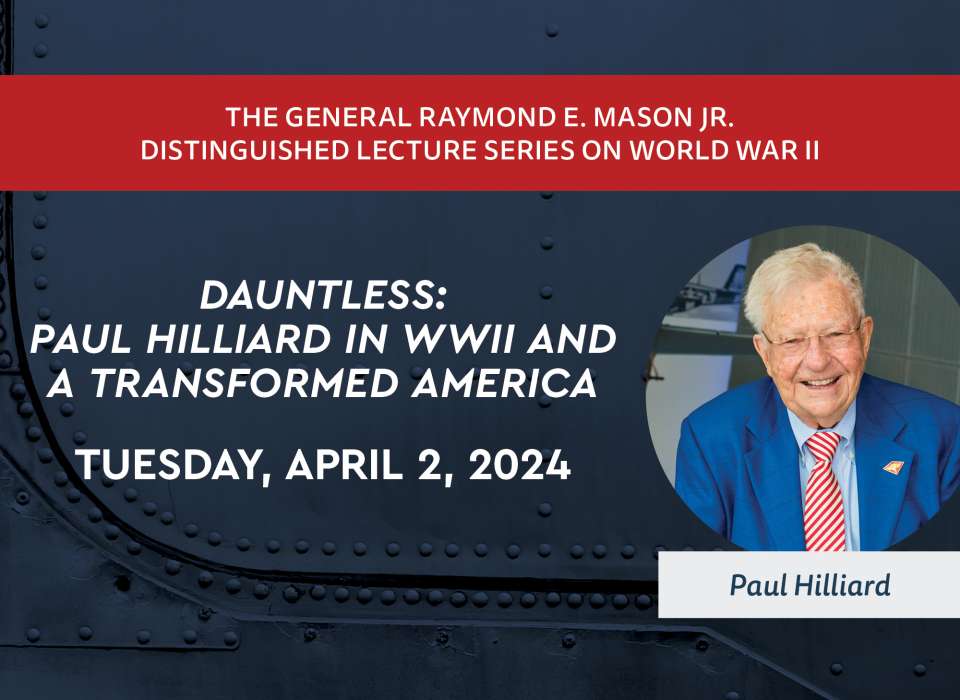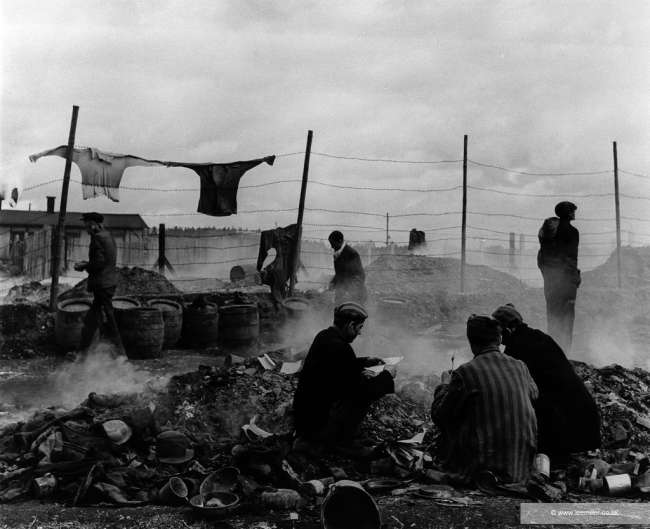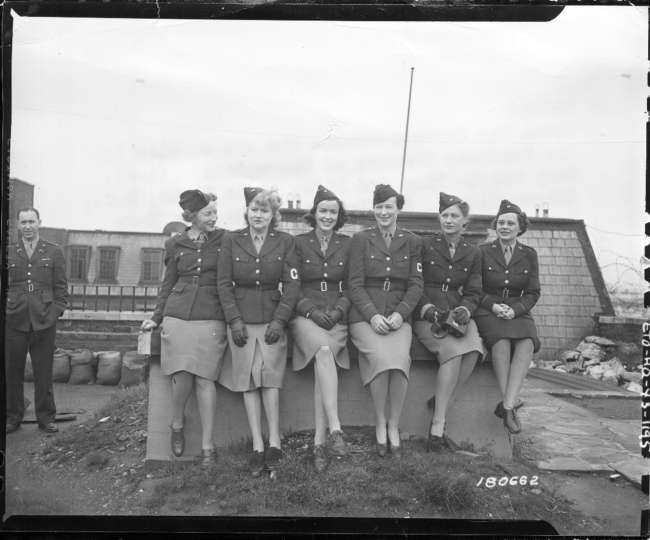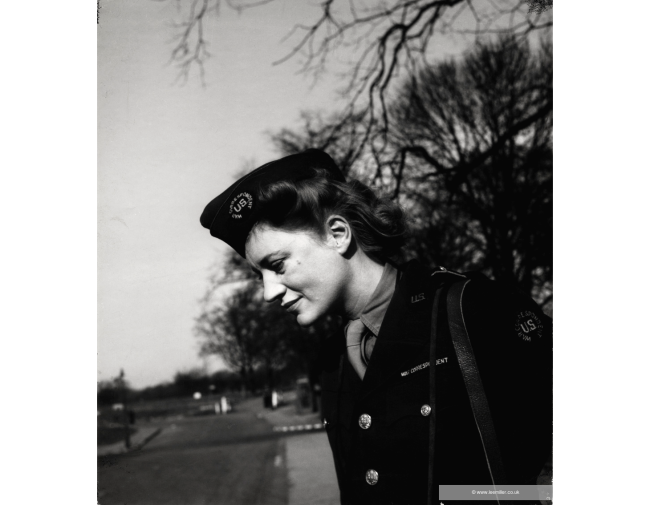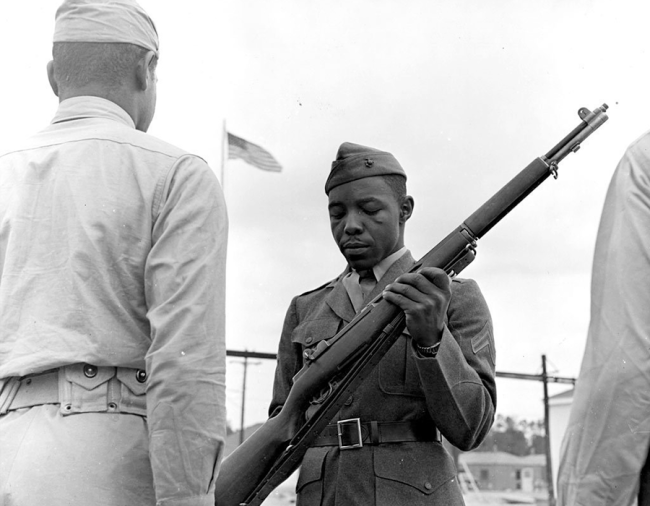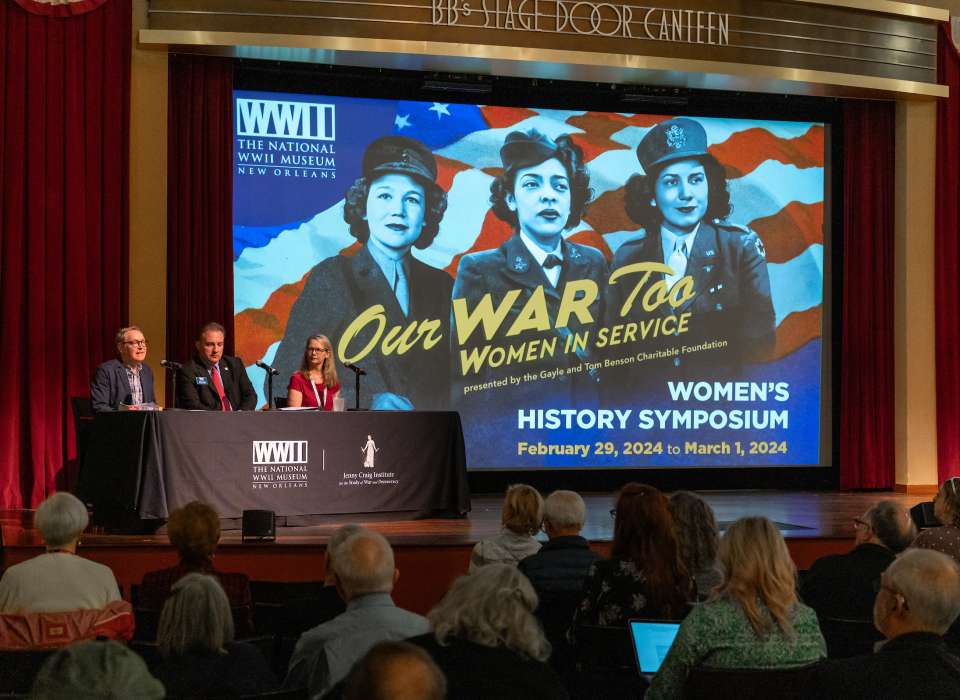Top Photo: The USS Arizona burning after the Japanese attack on Pearl Harbor, December 7, 1941. National Archives NAID: 520601
On the morning of December 7, 1941, the crewmembers of the USS Arizona were waking up, having breakfast, and preparing for their daily routines. Safely docked in Pearl Harbor and sheltered by 12,500 tons of armor, the men aboard the ship were relatively relaxed, and some officers even went ashore to visit with their families. The restful calm was suddenly broken by Japanese planes attacking the ships at anchor.
During the attack, the Arizona was struck by up to eight bombs, one of which ignited the ammunition on board, causing an explosion and a fire that overwhelmed the ship. The crew who survived the initial blast rushed into action, attempting to fight the blaze, but to little effect. Lieutenant Commander Samuel Fuqua, the ship’s damage control officer, continued to organize the fire-fighting and direct wounded men from the ship. As the flames grew, he ordered that all surviving crew members abandon ship. The fire continued for two days, during which time the ship slowly sank into the bay.
Unfortunately, 1,177 of the Arizona’s crew were killed in the attack. Many of the men on board had been killed instantly by the bombs, while others burned to death and went down with ship. Of the men pulled from the wreckage, many were burned beyond recognition. Their bodies were sent to nearby Nu’uanu and Halawa cemeteries, where they were buried as unknown servicemen. The ship itself was left to rest in the harbor, beyond salvage, with the remaining crew, over 900 men, declared “buried at sea.”
In September 1947, after the pressures of war had subsided, 170 unknown servicemen were exhumed from their graves in Hawaii and brought to the Schofield Barracks Central Identification Laboratory, where over 100 were identified and their families subsequently notified. The disinterment was a remarkable success, despite the remaining 70 men being declared “unrecoverable.” Those men were reburied at the National Memorial Cemetery of the Pacific in Honolulu (unofficially known as Punchbowl Cemetery because of its location at Punchbowl Crater).
It is these “unrecoverable” men that Kevin Kline, grandnephew of Gunner’s Mate Second Class Robert Edwin Kline, who perished aboard the Arizona, wants the Defense POW/MIA Accounting Agency (DPAA) to identify and return to their families. Kevin Kline’s passion for his work comes from his love for his great-uncle, but he is also inspired by the success in identifying fallen crewmen achieved by survivor and veteran Ray Emory.
Emory, who served aboard the USS Honolulu that fateful day, was horrified that many of his comrades-in-arms were lost to history, identified only as “unknown” in the cemeteries near Hawaii, without even the name of the ship on which they served and ultimately lost their lives. Emory researched the documents from Schofield Barracks Central Identification Laboratory and realized that new identifications could be made if the remains were exhumed. His research prompted the Joint POW/MIA Accounting Command (JPAC), a predecessor of the DPAA, to begin the USS Oklahoma Project, which sought to identify the remains of those who perished on the USS Oklahoma after the Pearl Harbor attack. In contrast to the Arizona, the majority of the Oklahoma’s crew was able to escape the initial impact of the attack. Of the 1,200-strong crew, however, 429 men were killed as the boat capsized in the minutes that followed. Their remains were trapped under the hull as the ship slowly overturned in the bay.
While the Oklahoma was initially declared unsalvageable, in May 1942 the decision was made to attempt to salvage the ship. It was righted, drained, and around 400 remains were removed and buried at Nu’uanu and Halawa cemeteries as unknowns, just like the fallen crew of the Arizona. Those remains were also investigated in September 1947, and attempts were made to identify them shortly after the war, but with little success. The unidentified then joined their comrades-in-arms from the Arizona at the National Memorial Cemetery of the Pacific.
A shift came in 2015. Project Oklahoma was officially launched by the DPAA, and the majority of the remaining unidentified crew members of the Oklahoma were disinterred for further investigation. After years of hard work and dozens of experts examining their cases, 361 previously unaccounted-for crewmen were identified and their families notified. They were finally able to go home.
Kevin Kline hopes to achieve a similar success with Operation 85, his privately funded project to help identify the unknown servicemen from the Arizona. Kline is working within DPAA guidelines, which stipulate that servicemembers may only be disinterred if it is more likely than not that they will be positively identified as a result. To have a good chance of positive identification for such an event as the attack on Pearl Harbor, the DPAA mandates that they must have DNA evidence for at least 60 percent of the fallen servicemembers. In the case of the Arizona, this means having DNA from either the serviceman himself or a family member so that a positive identification can be made. Operation 85 seeks out and puts family members in touch with the Navy Casualty Office and the Marine Corps Casualty Office, who collect the DNA. Kline’s main goal in this project is to reach the 60 percent threshold so that exhumation, investigation, and identification of the buried “unknown” crew members can begin.
If you or anyone you know is related to a fallen crew member of the Arizona, you can help return these men to their families by getting in touch with Operation 85 here or the DPAA here.
Sources
Doyle, David, Don Greer, and Todd Sturgell, USS Arizona (Carrollton: Squadron/Signal Publications, 2011).
DPAA, ‘History and Recovery Efforts of the USS Arizona’,
DPAA, ‘USS Oklahoma Project’,
Everett, Sean, ‘Pearl Harbor Day and the USS Oklahoma Project’, DPAA News, December 7, 2020.
Slackman, Michael, and Arizona Memorial Museum Association, Remembering Pearl Harbor: The Story of the USS Arizona Memorial (Honolulu: Arizona Memorial Museum Association, 1986).
